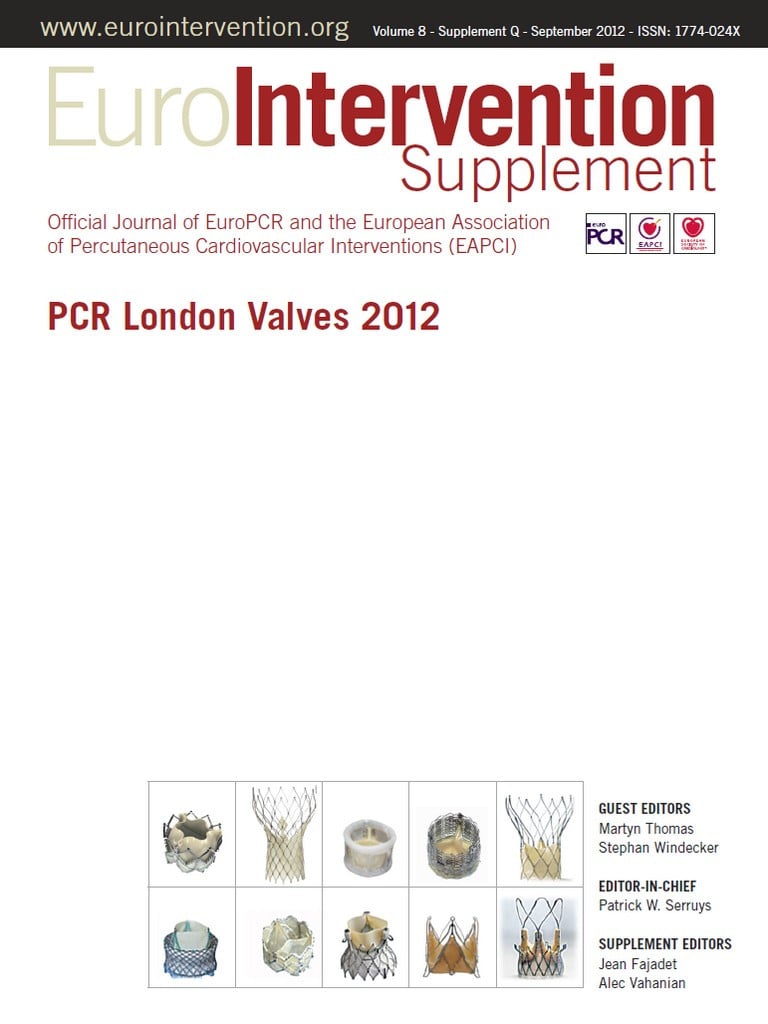![]()
Vascular access in TAVI
Balloon-expandable sheath for borderline vascular access in transfemoral TAVI
Aims: The percutaneous approach for TAVI is conditioned by the need for large-bore introducer sheaths with a diameter greater than 18 Fr and burdened by a high access-related complication rate (4-13%), due to advanced atherosclerosis of the iliofemoral axis. SoloPath™ (Onset Medical Corp., Irvine, CA, USA) is a balloon-expandable vascular sheath, hydrophilic and low-profile, that approaches the vessel as a 13 Fr device and reaches its nominal inner diameter of 18 Fr after dilatation, being less traumatic during insertion than standard sheaths. The aim of this study is to present the results of the employment of SoloPath™ for TAVI in borderline vessels in terms of procedural success and the incidence of vascular complications.
Methods and results: Based on angiography and CT scan imaging, we have defined as “borderline access” every ilio-femoral axis with at least one of these features: a) small vessel size (>5 <6 mm); b) focal stenoses; c) diffuse calcified atheromasia; d) tortuosity. We have evaluated procedural results and vascular complications according to VARC definitions in consecutive patients with difficult access, treated with the 18 Fr Medtronic CoreValve system and in whom we used the balloon-expandable sheath (SoloPath). The sheath was introduced after fluoroscopy-guided puncture and placement of Prostar as recommended. At least one of the mentioned anomalies was encountered in 27 patients. Specifically, we found 11 diffusely small vessels, nine focal stenoses, 19 diffuse and calcified atheromasia and 13 severe tortuosities (nine kinking, four loop). In all patients the transfemoral approach was selected and the prosthesis was implanted. In one case, the prosthesis was recovered successfully, while in another the prosthesis and the introducer were damaged during recovery without vascular complications. Procedural success was obtained in 26/27 patients, as one CoreValve was implanted in a low position causing a worsening of the underlying mitral insufficiency and, consequently, refractory heart failure and death at the third month. We observed five vascular events that required urgent surgical repair: three incomplete arteriotomy closures with the Prostar device; one common femoral artery perforation and iliac artery dissection during Prostar introduction, before SoloPath insertion; one common femoral artery perforation due to percutaneous puncture in an improper site (bifurcation). All five patients experienced a haemoglobin drop requiring RBC transfusion (>4 packed cells). Mean length of in-hospital stay was 14.3 days. We did not observe any minor vascular complications.
Conclusions: The balloon-expandable vascular sheath may be helpful in the management of the borderline iliac-femoral axis. Observed major vascular complications are not directly related to the sheath. When the introduction site shows diffuse disease, surgical cut-down of the vessel would be a better option than percutaneous puncture, while alternative access sites can be considered despite higher invasiveness and morbidity.

